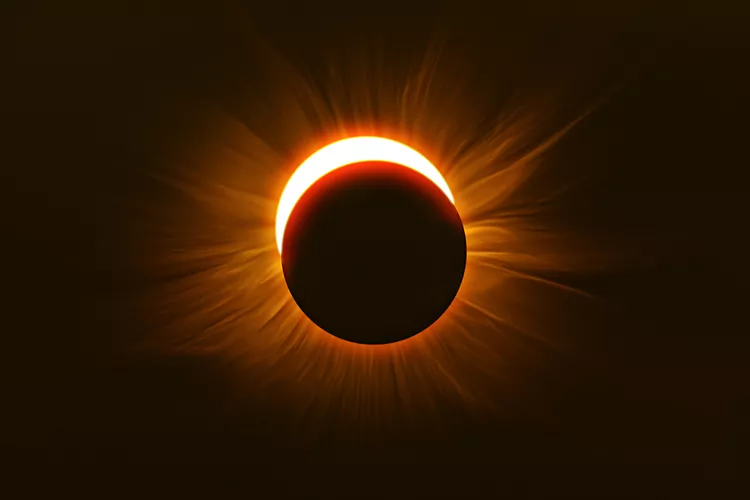Total Solar Eclipse 2024: A Celestial Event Across the U.S.
On April 8, 2024, a total solar eclipse will cross the United States from Texas to Maine. This celestial phenomenon occurs when the moon blocks out the sun’s light over a narrow strip of the Earth, resulting in brief daytime darkness. The allure of this awe-inspiring event has turned many into eclipse chasers, seeking to witness every total solar eclipse around the globe. Are you excited to see this extraordinary event yourself? Below, we outline everything you need to know about the 2024 total solar eclipse in the U.S.
What is a Total Solar Eclipse?
A solar eclipse happens when the Earth, sun, and moon align perfectly, causing the moon’s shadow to cast over the Earth. When this alignment positions the moon correctly, a total solar eclipse occurs, completely blocking the sun’s light for those in the path of totality, thus producing a remarkable experience of day turning to night.
How to Prepare for a Solar Eclipse
If you plan to travel to experience the path of totality, it is essential to secure accommodations well in advance of the eclipse. The last total eclipse in the U.S. attracted over 20 million Americans. As a result, it is likely that even more will travel for the 2024 eclipse, especially since the path of totality is only 115 miles wide, causing hotels, rentals, and campsites to fill up rapidly.
In addition, prioritize safety when viewing the eclipse. Never observe the sun with the naked eye, as this can result in permanent damage to your eyesight. To safely view the eclipse, wear solar eclipse glasses which will protect your eyes while allowing you to see the moon covering the sun. During totality, it is safe to look directly at the obscured sun with the naked eye, but remember to put your glasses back on immediately after totality ends.
When is the 2024 Solar Eclipse?
The spectacular total solar eclipse will occur on April 8, 2024. While the entire event lasts several hours, totality will only be visible for a few minutes. As the eclipse crosses various time zones, its timing will differ depending on your location. Here’s a breakdown of the total eclipse schedule based on Universal Coordinated Time (UTC):
- Partial eclipse begins: 15:42 UTC
- Total eclipse begins: 16:38 UTC
- Greatest eclipse: 18:17 UTC
- Total eclipse ends: 19:55 UTC
- Partial eclipse ends: 20:52 UTC
For precise timings at specific locations, refer to an eclipse map to determine when the eclipse will occur in your area.
Where to See the 2024 Total Solar Eclipse
:max_bytes(150000):strip_icc():format(webp)/TAL-total-eclipse-illustrated-map-new2-ECLIPSE2024-a30a2ad059d84ad5b92beb159ebc04a1.jpg)
Texas
The eclipse will enter Texas near Eagle Pass and travel through cities including Fredericksburg, Austin, Waco, Fort Worth, and Dallas. Totality in Eagle Pass occurs from 1:27 p.m. CDT to 1:32 p.m. CDT, while in Dallas, it runs from 1:40 p.m. CDT to 1:44 p.m. CDT.
Oklahoma
Only the southeastern corner of Oklahoma will be within the path of totality, notably in the resort town of Broken Bow where totality begins at 1:45 p.m. CDT and ends at 1:50 p.m. CDT.
Arkansas
In Arkansas, the eclipse travels from Texarkana, through Hot Springs and Little Rock, exiting the state northeast of Jonesboro. Totality in Texarkana starts at 1:46 p.m. CDT and wraps up at 1:49 p.m. CDT, while in Jonesboro, it runs from 1:55 p.m. CDT to 1:58 p.m. CDT.
Missouri
:max_bytes(150000):strip_icc():format(webp)/TAL-missouri-cape-girardeau-SLRECLIPSE0523-d4cd5681e1904c179dc5ae7a4bbe6e64.jpg)
The path of the eclipse traverses the southeastern corner of Missouri, passing through Poplar Bluff and Cape Girardeau. Totality occurs in Poplar Bluff from 1:56 p.m. CDT to 2:00 p.m. CDT and in Cape Girardeau from 1:58 p.m. CDT to 2:02 p.m. CDT.
Illinois
The southern tip of Illinois will experience totality. In Carbondale, it starts at 1:59 p.m. CDT and ends at 2:03 p.m. EDT.
Kentucky
A small portion of Kentucky is in the path of totality, particularly in Paducah, where totality runs from 2:00 p.m. CDT to 2:02 p.m. CDT.
Indiana
Approximately half of Indiana will observe totality, beginning south near Evansville, then advancing through cities like Vincennes, Bloomington, Indianapolis, and Muncie. In Evansville, totality begins at 2:02 p.m. CDT, ending at 2:05 p.m. CDT, while Muncie sees totality from 3:07 p.m. EDT to 3:11 p.m. EDT.
Ohio
Most northern Ohio, including cities such as Dayton, Akron, and Cleveland, will experience totality. In Dayton, it runs from 3:09 p.m. EDT to 3:12 p.m. EDT, and in Cleveland, it lasts from 3:13 p.m. EDT through 3:17 p.m. EDT.
Pennsylvania
:max_bytes(150000):strip_icc():format(webp)/TAL-pennsylvania-erie-SLRECLIPSE0523-ce9a9eefe3b7451b854819877dcefd10.jpg)
While most of Pennsylvania lies outside the path of totality, Erie and surrounding areas will witness the event. Totality in Erie starts at 3:16 p.m. EDT and ends at 3:20 p.m. EDT.
New York
In New York, the path of totality runs diagonally from the bottom left to the upper right. Cities such as Buffalo, Rochester, Oswego, Syracuse, and Plattsburgh are included, as well as part of the Finger Lakes region, covering towns like Canandaigua, Geneva, and Seneca Falls. In Buffalo, totality begins at 3:18 p.m. EDT and lasts until 3:22 p.m. EDT, while in Plattsburgh it starts at 3:25 p.m. EDT and ends at 3:29 p.m. EDT.
Vermont
Most popular destinations in Vermont, including Burlington, Stowe, and Montpelier, lie within the path of totality. The totality timing for these cities is minimal with Burlington and Stowe experiencing it from 3:26 p.m. EDT to 3:29 p.m. EDT, and Montpelier from 3:27 p.m. EDT to 3:29 p.m. EDT.
New Hampshire
In New Hampshire, much of the northern region is sparsely populated; however, the town of Colebrook offers totality from 3:28 p.m. EDT through 3:31 p.m. EDT.
Maine
:max_bytes(150000):strip_icc():format(webp)/TAL-maine-presque-isle-SLRECLIPSE0523-a130b7a68444401a821e01a6600a1708.jpg)
Much of northern Maine is also sparsely populated, but it has substantial areas within the path of totality. In Millinocket, totality begins at 3:31 p.m. EDT and ends at 3:34 p.m. EDT. Presque Isle, Caribou, and nearby towns will witness totality from 3:32 p.m. EDT to 3:34 p.m. EDT, making them among the final locations in the U.S. to experience this magical moment.




